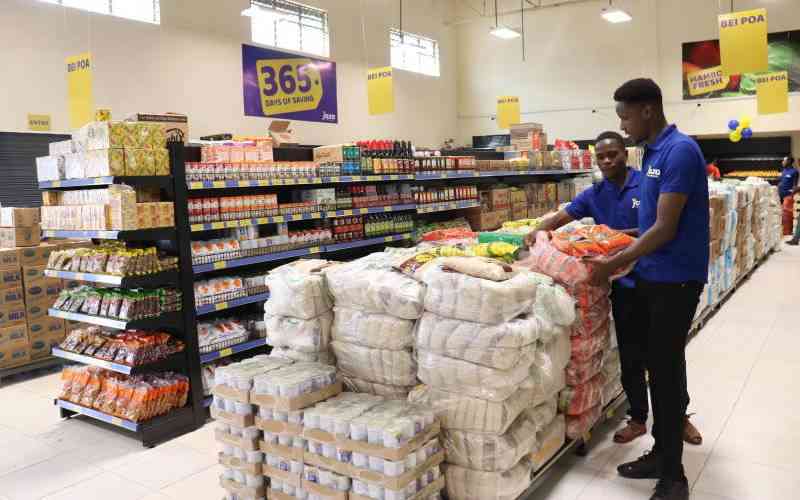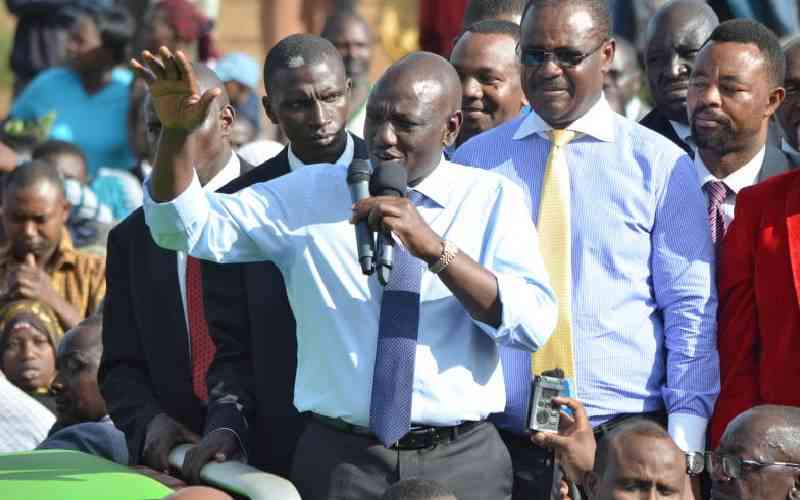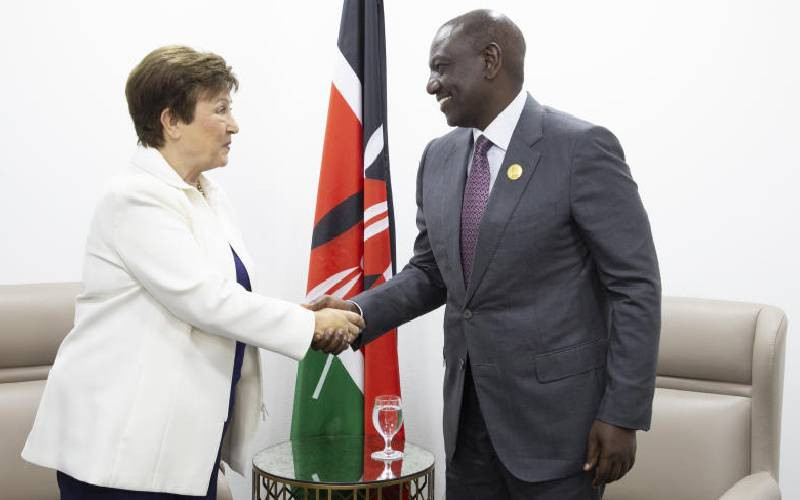
Nairobi, Kenya’s capital city and commercial hub, is by far the richest county, according to a new report that is also likely to add fuel to the ongoing debate on the new revenue sharing formula.
While Nairobi has the lowest share of poor population, in Turkana four in five people are poor, with those in the urban parts of Josphat Nanok-led county spending less than Sh5,995 in a month, while those in rural areas earn less than Sh3,252, according to the Kenya National Bureau of Statistics (KNBS).
KNBS ranked Meru, Nyeri and Kirinyaga jointly as the second richest counties, with most of its residents able to comfortably fend for themselves. Other counties with fewer poor people include Narok, Kiambu, Machackos, Tharaka Nithi, Murang’a and Mombasa.
The report comes when the political class is sharply divided over a new revenue sharing formula, which critics have noted heaps more cash to rich counties at the expense of poor ones.
Besides looking at the monetary poverty, the Comprehensive Poverty Report also focuses on multidimensional poverty, which goes beyond the so-called poverty-line metric that only focuses on people’s income.
With multidimensional poverty, the report looked at such dimensions as physical development (stunting), nutrition, health, education, child protection, information, water, sanitation and housing.
For youths (18-34 years) and adult women and men (35-59 years), the indicators that went into measuring multidimensional poverty included nutrition, education, economic activity, information, water, sanitation and housing.
It is in multidimensional poverty, as opposed to monetary poverty, that the country is doing badly, with slightly over half (53 per cent) of Kenyans not enjoying all these services.
About 23.4 million Kenyans are multi-dimensionally poor, deprived in realisation of at least three basic needs, services and rights.
Young women, those between the ages 18 and 34, are more likely to be multidimensionally poor.
Close to half (46 per cent) of young women are deprived of economic activity compared to 34 per cent of young men.
As for monetary poverty, only 36 per cent of Kenyans were considered poor.
“The Sustainable Development Goals explicitly include a target on reducing multidimensional poverty,” said National Treasury Cabinet Secretary Ukur Yatani in a speech yesterday.
He put emphasis on the United Nation’s target of reducing by half the proportion of women, men and children living in poverty in all its dimensions.
Stay informed. Subscribe to our newsletter
Close to 15.7 million Kenyans were poor as at the end of 2016, according to the report that was also supported by Unicef.
There was also another report that looked at women empowerment in the country while another delved on child poverty.
After Turkana, the next poorest counties, in monetary terms, were Mandera, Samburu, and Busia in that order. Others are Garissa, Marsabit, Wajir and West Pokot.
Most of these counties have lost out in the new revenue sharing formula, which puts more emphasis on services than poverty rate.
In making the case for the third formula, the Commission on Revenue Allocation (CRA) said it seeks to enhance service delivery, promote balanced development, encourage counties to raise their own cash and prudently use public resources.
The newly-added elements are access to healthcare, road network, agricultural activity and provision of urban services.
But critics of the new formula believe it hurts, rather than help, the poor. Those for it, who use the mantra “one man, one vote, one shilling”, insist it will banish poverty in Kenya.
From the surface, the new revenue-sharing formula attaches less significance to poverty than previous formulas.
Indeed, the weight of the poverty index has been shrinking since Kenya embarked on implementing devolution seven years ago.
Under the first formula, the poverty index had a weight of 20 per cent. It then went down to 18 per cent in the second model and has taken a significant dip to 14 per cent under the latest proposal.
Thus, the 10 counties with the highest number of poor people stand to lose a collective Sh4.4 billion under the proposed formula, going by CRA calculations.
This dip is calculated against what they earned in the previous financial year under the second basis of revenue sharing.
An analysis of the census data for 2019 showed that beside Nairobi, most of the richest households in the country are also found in Kiambu, Kisumu, Mombasa and Kajiado counties.
They enjoy functional services like piped water, but most of them do not get their drinking water from the taps - instead they buy bottled water.
And as more wealthy people put up or buy homes outside the city, the number of households with cars is increasing in areas like Athi River and Kajiado North.
A ranking of Kenya’s richest, in terms of wealth, released by KNBS earlier last year, ranked Nakuru as the second-largest economy after Nairobi in the inaugural 2019 Gross County Product (GCP) report.
Other counties that were ranked highly by the ground-breaking report due to their impactful economic activities but do not host any of the top 20 constituencies favoured by the wealthy include Nyandarua and Elgeyo Marakwet.
The KNBS report found that residents of Nairobi were the third most productive after those in Nyandarua and Elgeyo Marakwet, which had the first and second-highest GCP per capita (per person), respectively.
The national statistician calculated GCP per capita by dividing the total value of all finished goods and services produced in a county by its population.
Even critical is that the report sought to debunk the oft-repeated myth that Nairobi contributes over half of the overall economy in what is likely to result in massive re-engineering of investment in the country.
Nonetheless, Nairobi’s GCP was the largest, contributing 21.7 per cent to the country’s gross domestic products (GDP). Nakuru came second, racing ahead of Mombasa and Kisumu, which enjoy city status.
Nakuru contributed about 6.1 per cent to GDP, or the sum of all goods and services produced in the country in 2017.
The findings of the 2019 GCP – the GDP of each county – will also disappoint a group of politicians from the Mt Kenya region, who are pushing for more resources to be funneled to their backyard, arguing that their region contributes 60 per cent to the national cake.
“We know that Mt Kenya region contributes over 60 per cent of our country’s GDP, yet only 20 per cent comes back to its people,” said nominated MP Cecily Mbarire, who chaired a caucus of 70 MPs drawn from the region.
However, an analysis of the data shows that all the counties from what has been known as Mt Kenya region contribute less than 20 per cent combined.
However, from the latest data on poverty, Mt Kenya has less poverty than other parts of the country.
Other Mt Kenya counties that rank high in terms of having fewer poor people are Tharaka Nithi and Murang'a, which feature in the top 10 list.
West Pokot and Turkana were the second and third last counties in GCP per capita.
The report also showed that some counties were doing badly, with some of them having virtually no industries.
The county GCP figures may also play a key role in how the national cake is shared, with the CRA hinting that those with higher potential will get more funds to boost their productivity.
 The Standard Group Plc is a
multi-media organization with investments in media platforms spanning newspaper
print operations, television, radio broadcasting, digital and online services. The
Standard Group is recognized as a leading multi-media house in Kenya with a key
influence in matters of national and international interest.
The Standard Group Plc is a
multi-media organization with investments in media platforms spanning newspaper
print operations, television, radio broadcasting, digital and online services. The
Standard Group is recognized as a leading multi-media house in Kenya with a key
influence in matters of national and international interest.
 The Standard Group Plc is a
multi-media organization with investments in media platforms spanning newspaper
print operations, television, radio broadcasting, digital and online services. The
Standard Group is recognized as a leading multi-media house in Kenya with a key
influence in matters of national and international interest.
The Standard Group Plc is a
multi-media organization with investments in media platforms spanning newspaper
print operations, television, radio broadcasting, digital and online services. The
Standard Group is recognized as a leading multi-media house in Kenya with a key
influence in matters of national and international interest.










